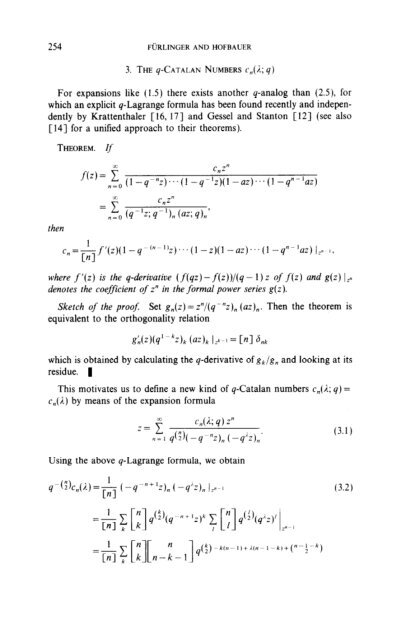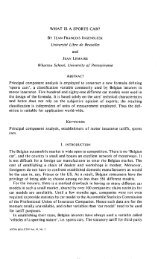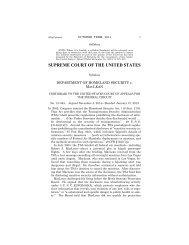85jct_catalan
You also want an ePaper? Increase the reach of your titles
YUMPU automatically turns print PDFs into web optimized ePapers that Google loves.
254 FURLINGER AND HOFBAUER<br />
3. THE q-CATALAN NUMBERS cn(J*; q)<br />
For expansions like (1.5) there exists another q-analog than (2.5) for<br />
which an explicit q-Lagrange formula has been found recently and independently<br />
by Krattenthaler [ 16, 171 and Gessel and Stanton [ 121 (see also<br />
[14] for a unified approach to their theorems).<br />
THEOREM.<br />
If<br />
f(z+,<br />
(lwq-nz)...(l \ _ q-‘z)(l CnZn -az)...(l -q”-bz)<br />
then<br />
= .;, (4-12; ,“:,:, (uz; q)n’<br />
1<br />
c,ECnlf’(z)(l -q- (“-‘)z) . ..(I -z)(l-az)...(l -q+‘az) IZ” i,<br />
where f’(z) is the q-deriuatioe (f(qz) -f(z))/(q - 1) z of f(z) and g(z) IZn<br />
denotes the coefficient of z” in the formal power series g(z).<br />
Sketch of the proof Set g,(z)=z”/(q-“z), (a~),. Then the theorem is<br />
equivalent to the orthogonality relation<br />
ddz)(q’pkz)k (az)k izk-l = InI 6nk<br />
which is obtained by calculating the q-derivative<br />
residue. 1<br />
of gk/g,, and looking at its<br />
This motivates us to define a new kind of q-Catalan numbers c,(A; q) =<br />
c,(A) by means of the expansion formula<br />
zr<br />
a,<br />
c,(k 4) zn<br />
rt?, q(Z)( -q mmnz), (-qiz),,’<br />
Using the above q-Lagrange formula, we obtain<br />
(3.1)<br />
,-Wcn(i)=~ (-q--n+lz), ( -qiz)n );.-I (3.2)





